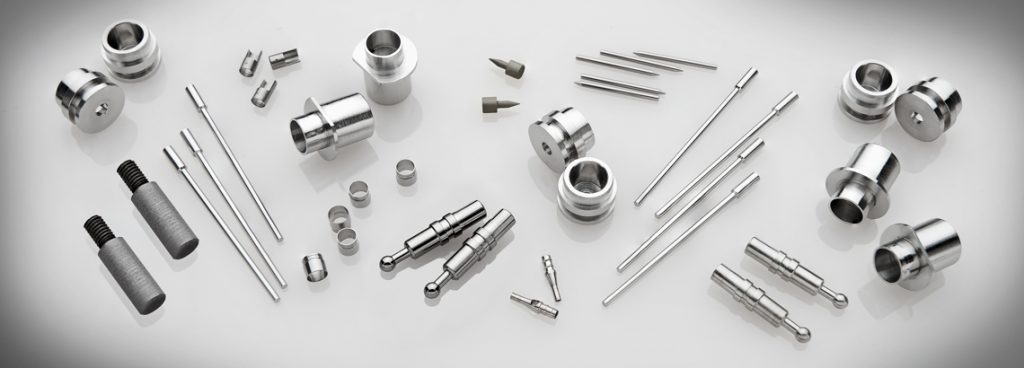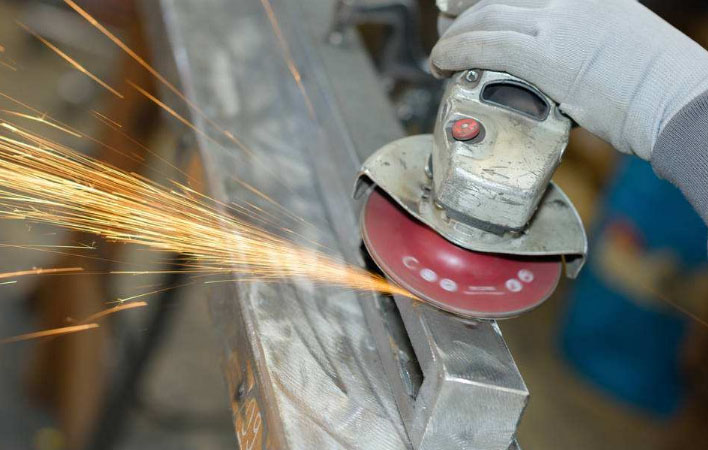Polishing refers to the use of mechanical, chemical or electrochemical effects to reduce the surface roughness of the workpiece to obtain a smooth surface. Polishing is the finishing of the surface of parts. The main purpose is to remove the processing traces of the previous process, such as knife marks, scratches, pits, sharp edges, burrs, etc., to improve the surface roughness of the parts and obtain a bright and smooth surface. Increase beauty. But polishing cannot improve the dimensional accuracy and position accuracy of the product. Very little material is removed during polishing, usually in micrometers
Before the polishing process, the surface quality of the workpiece to be polished must be high-quality, so the pre-polishing process is usually “grinding” the surface. At present, it has been widely used in various industries, such as consumer electronics, household appliances, automobiles, etc.
Today we will introduce in detail the characteristics of polishing, common types of polishing, and the corresponding advantages and disadvantages.
Characteristics Of Polishing
- Polishing can improve the fatigue and corrosion resistance of the workpiece.
- Polishing can also be used as an intermediate process to provide a surface with strong paint film and coating adhesion for subsequent processes such as painting and electroplating.
- Polishing is a widely used abrasive processing method. Metal and non-metallic materials, precision electromechanical products, and daily necessities can all be polished to improve surface quality.
- Polishing generally does not require special equipment, and the tool box processing method is relatively simple and low in cost.
- It can only reduce the surface roughness value but cannot maintain or improve the original machining accuracy. Because there is no rigid movement connection between the polishing wheel and the workpiece, and the polishing wheel is elastic, it cannot guarantee the uniform removal of the material from the surface of the workpiece, just remove it The traces left by the previous process get a bright surface.
- Poor working conditions. At present, polishing is mostly manual operation, with frequent work, and splashing abrasive particles, media, micro-chips, etc. pollute the environment. In order to improve working conditions, an abrasive belt grinder can be used for polishing instead of manual polishing with a polishing wheel.

The Mechanism Of Polishing
A comprehensive process of polishing, cutting, plastic processing and chemical action. The fine abrasive grains are cutting processing, and the high temperature caused by friction is plastic processing. The medium of the polishing agent has a chemical interaction with the metal surface layer under the action of temperature and pressure.
Types Of Polishing
There are many types of polishing processes, including mechanical polishing, electrolytic polishing, chemical polishing and nano polishing.
1. Mechanical Polishing
Mechanical polishing is a polishing method that relies on cutting and plastic deformation of the material surface to remove the polished convex parts to obtain a smooth surface. Mechanical polishing is currently widely used in various manufacturing industries. It is performed on a dedicated polishing machine, which is mainly composed of a motor and a polishing disc. According to different product materials, polishing consumables of different materials are placed on the polishing disc. The choice of rough polishing and fine polishing consumables is different. When polishing, the sample should be flat pressed on the rotating polishing disk. The pressure should not be too large, and should continuously reciprocate radially from the edge to the center of the disk. Through the relative grinding and rolling action between the extremely fine polishing powder (liquid) and the grinding surface, the wear marks are eliminated and a bright mirror surface is obtained.
Advantages and disadvantages of mechanical polishing:
The advantages are low cost and simple operation.
The disadvantage is low efficiency, easy to cause uneven polishing surface, difficult to control polishing time, only suitable for small area surface treatment.

2. Chemical Polishing
Chemical polishing is similar to electrolytic polishing. This is a method to eliminate the traces of wear on the sample surface by chemical etching with chemical reagents, so that the microscopically convex part of the material in the chemical medium is preferentially dissolved than the concave part, thereby obtaining a smooth surface. The chemical polishing equipment is simple and easy to implement, can process thin tubes, deep holes, and complicated-shaped parts, and has high production efficiency. Chemical polishing can be used as a pretreatment process for electroplating, and it can also be directly used for chemical polishing after polishing with necessary protective measures.
Advantages and disadvantages of chemical polishing:
The advantage is that the chemical polishing equipment is simple and can handle more complicated parts.
The disadvantage is that the polishing quality is not as good as electrolytic polishing. The polishing liquid used has a short service life and is difficult to adjust and regenerate. In the chemical polishing operation, nitric acid releases a large amount of yellow-brown harmful gas, causing serious pollution to the environment.
3. Electrolytic Polishing
The basic principle of electrolytic polishing is the same as that of chemical polishing, that is, by selectively dissolving tiny protrusions on the surface of the material to make the surface smooth.
Electrolytic polishing is a type of anode polishing. This is an electrolytic machining, the principle of which is to first dissolve the anode in a specific electrolyte and have an appropriate current density. Also called electropolishing. At present, electrolytic polishing of stainless steel is more and more favored by enterprises and is an environmentally friendly polishing method.
Advantages and disadvantages of electrolytic polishing:
The advantage lies in the ability to polish hard and soft materials that are difficult to mechanically polish, as well as thin-walled, complex-shaped small parts and products. The polishing time is short, multiple pieces can be polished at the same time, the production efficiency is high, the cost is low, the product surface is corrosion-resistant, and it will not cause metal surface deformation, etc.;
The disadvantage is that the pre-polishing treatment is more complicated, the electrolyte is poor in versatility, the service life is short, the corrosiveness is strong, and the handling is difficult.
4. Nano Polishing
Nano polishing is called plasma polishing, which is a new type of environmentally friendly polishing process. The polishing liquid used in nano-polishing has small oxide particle size and strong hardness, so there will be no scratches during the polishing process, and the polishing effect is good. It is widely used in consumer electronics, furniture, medical, automotive, aerospace and other fields.
The Advantages Of Nano Polishing:
Nano polishing liquid is very environmentally friendly, its waste liquid can be directly discharged without causing pollution, and it can also be slightly treated and recycled.
Plasma nano polishing adopts special automatic control equipment, which is easy to operate and easy to maintain.
The processing cost is low, which is conducive to promotion, can reduce the number of operators and reduce labor costs.
Through the special agent, the automatic control equipment can achieve the electroplating mirror effect in ten seconds to two minutes, which greatly improves the production efficiency.
The entire surface of the workpiece and the dead angle can achieve a consistent mirror effect, and can also enhance the chemical properties of the product surface. .
CNC machining service is the core business of SANS Machining, from protptyes to bulk production, our professional 3/4/5 aixs CNC machining centers, CNC turning equipment, CNC turning-milling equipments, CNC grinding machines etc., are operated by well trained manufacturing engineers to meet the demands from global customers in many industries.


